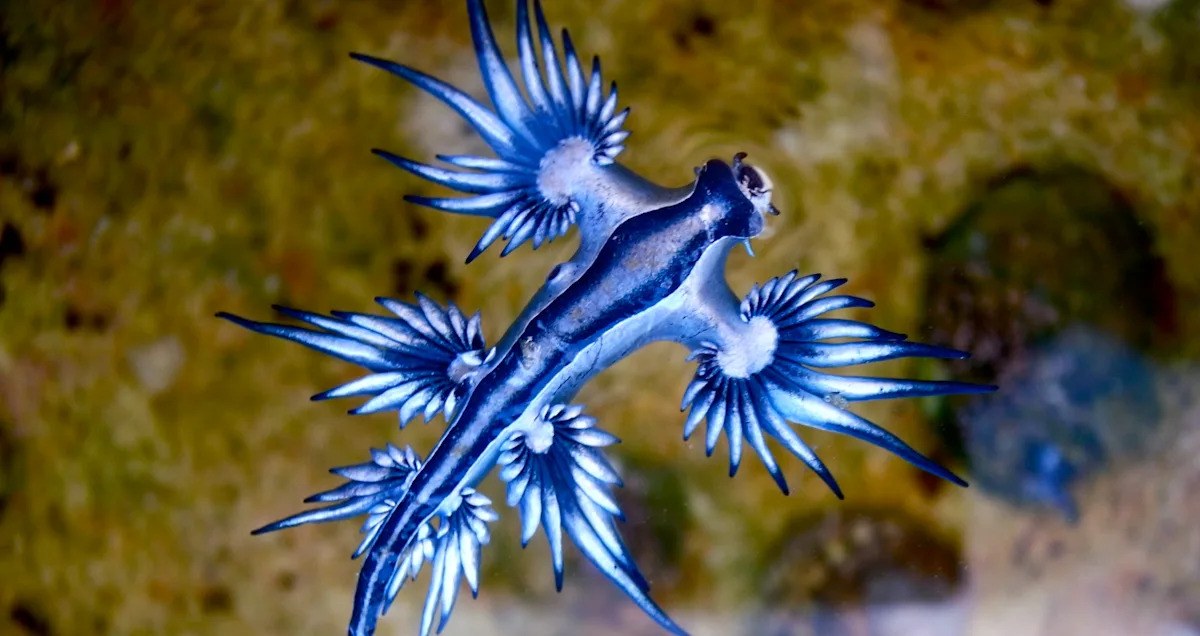Small but mighty and venomous creatures have caused the closure of tourist beaches for a second time in southeastern Spain this week after they were discovered in the water, local authorities announced Friday.
The Glaucus atlanticus is colloquially named the “blue dragon sea slug” for its resemblance to the mythical dragon, and several more of them were found in the water off the beaches of Guardamar del Segura, in Alicante, Spain, this week.
The Guardamar police prohibited beachgoers from swimming on Friday. In a post translated via Facebook, police wrote: “The red flag is raised again on our beaches due to the presence of [what’s] known as “blue dragon” (Glaucus atlanticus). It’s a small sea clam whose sting can cause intense pain, vomiting and adverse reactions.”
The latest advisory comes after authorities issued a red flag warning on Wednesday prohibiting swimming at the beaches due to the presence of blue dragon sea slugs. The region’s mayor, José Luis Sáez, subsequently announced on Thursday that swimming had been allowed again with a yellow flag warning.
If people see a blue dragon sea slug on the beach, Sáez advised them not to touch it — not even with gloves — and said they should notify rescuers and authorities. If a person gets itchy, rinse with salt water and go to the emergency room or health center, he said.
Blue dragon sea slugs are only about 1.2 inches long, but they’re mighty. The foraging predators feed off of much larger venomous prey, like the Portuguese man-of-war jellyfish, whose poison doesn’t affect them. In fact, seizing poison from their victims is essential to their survival.
They have three pairs of “tendril-tipped appendages that spread like wings,” the U.S. Bureau of Ocean Energy Management explains on its website. The blue dragons store the stolen stinging cells from their prey in their tendrils in a more highly concentrated dosage. “This increased potency of venom gives the blue dragon a vicious sting, allowing them to paralyze prey 300 times its size.”
The creature drifts through the ocean, carried by currents and wind. It floats upside down on the sea’s surface, supported by a gas bubble in its stomach, exposing its bright blue belly adorned with dark and light blue stripes, basically camouflaging itself from seabirds above. Its silvery gray back blends in with the sea surface, hiding it from fish below.
Blue dragon sea slugs are usually found in tropical waters of the Atlantic, Pacific and Indian oceans, but they have recently expanded to the east and south coasts of Australia, South Africa and even along the Texas Gulf Coast “likely due to increased water temperatures from the impact of climate change and changes in ocean currents,” the BOEM says.
